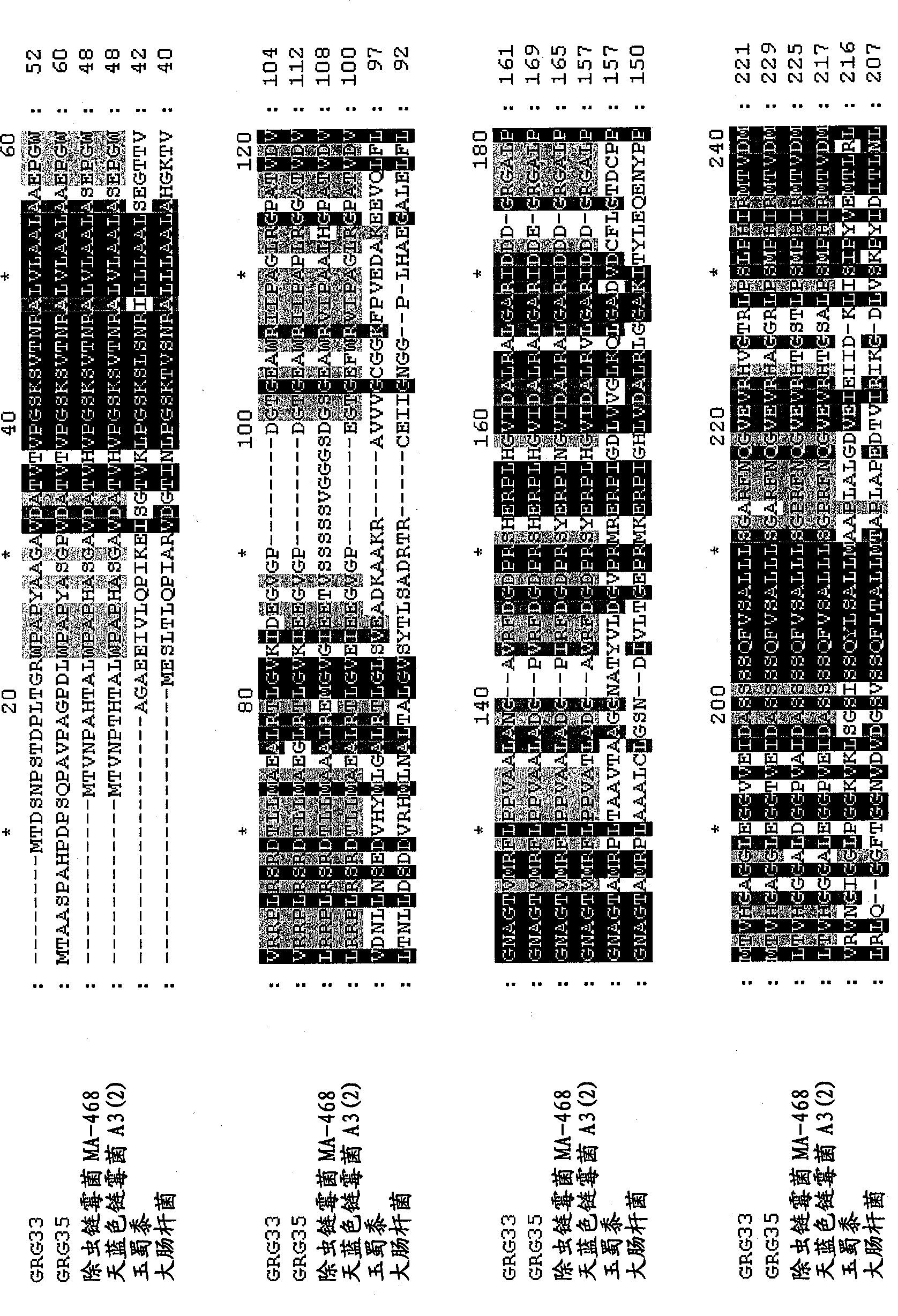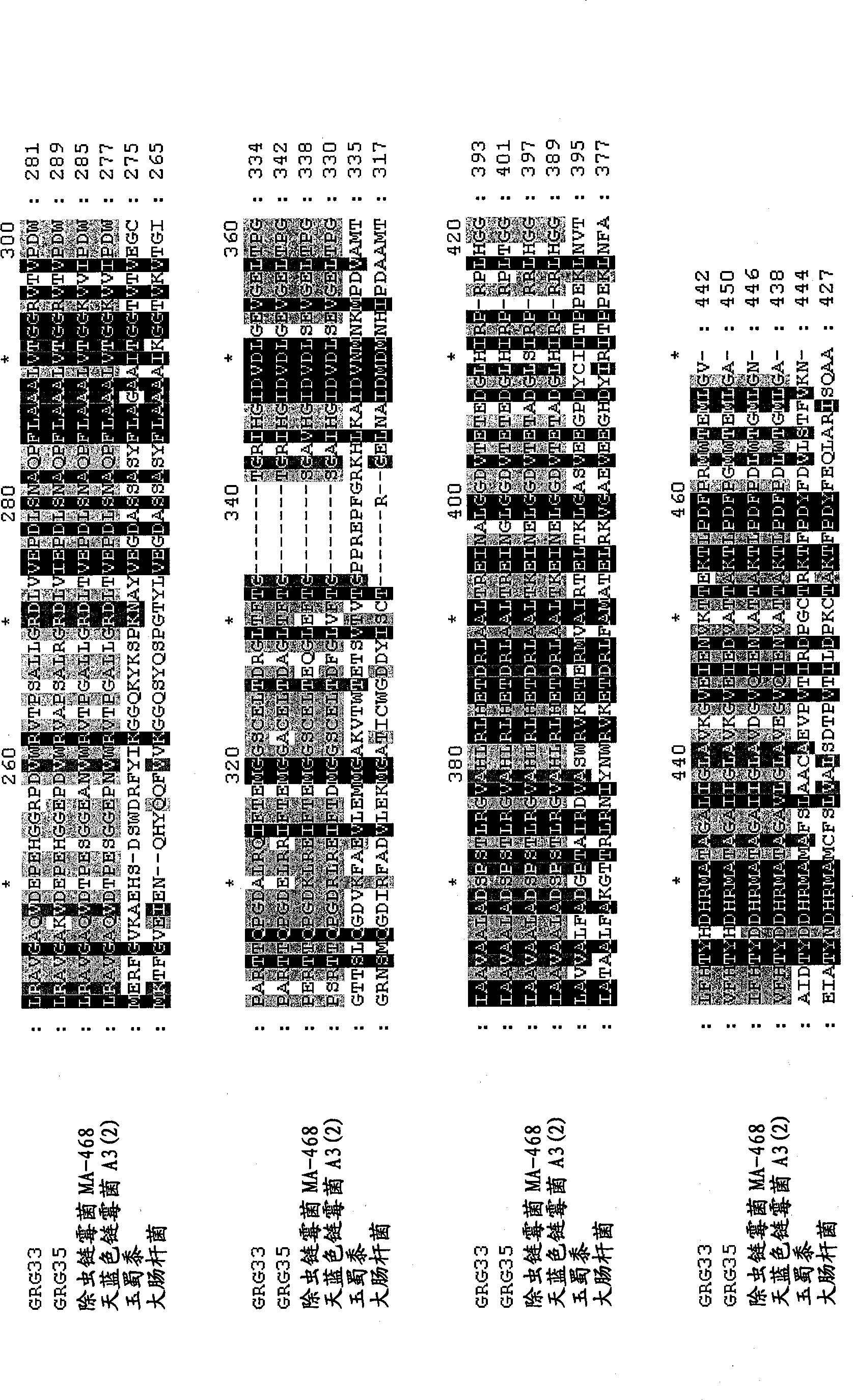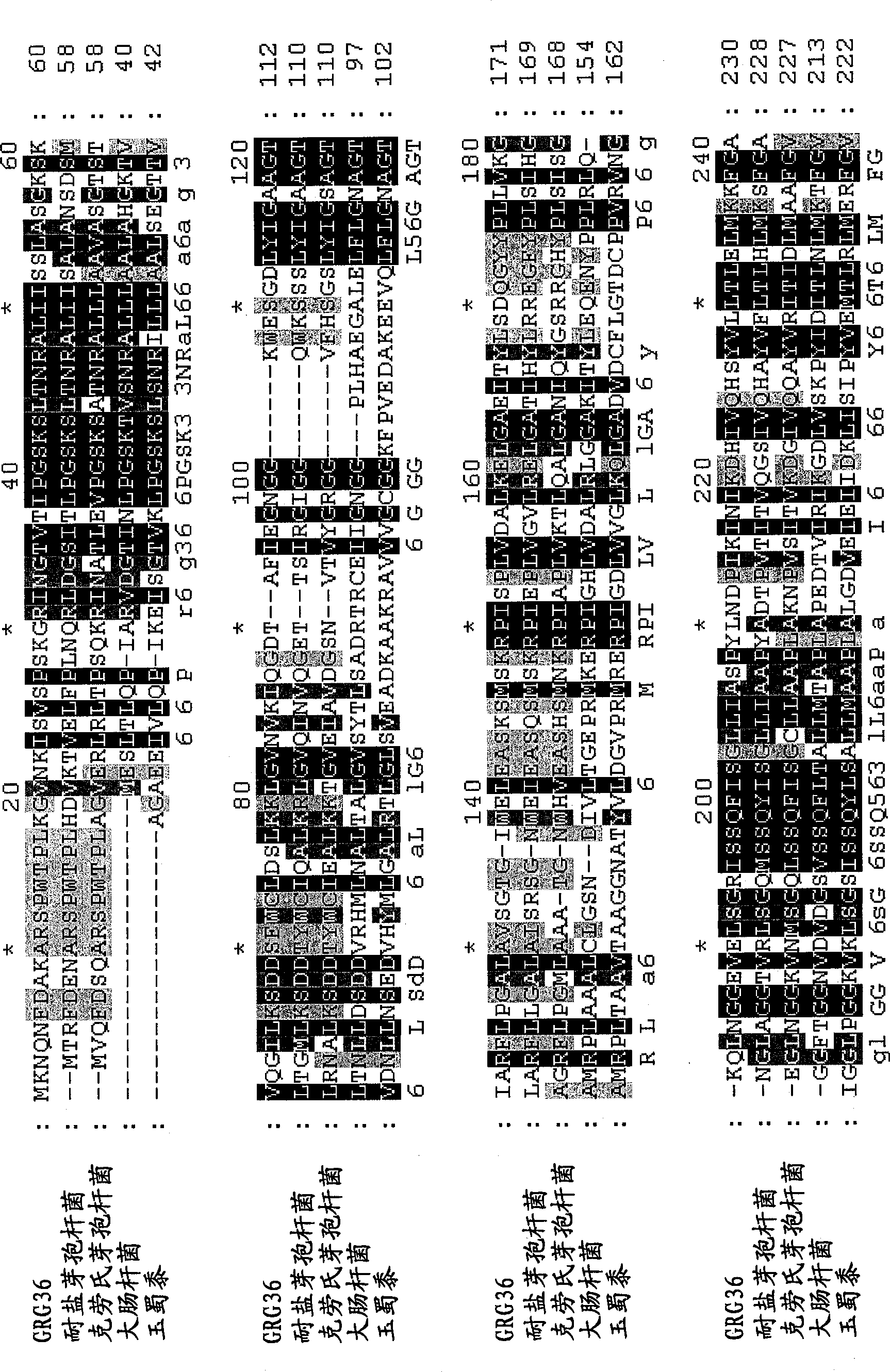Grg33, grg35, grg36, grg37, grg38, grg39, and grg50: novel epsp synthase genes conferring herbicide resistance
A herbicide and resistance technology, applied in the direction of plant genetic improvement, botany equipment and methods, biochemical equipment and methods, etc.
- Summary
- Abstract
- Description
- Claims
- Application Information
AI Technical Summary
Problems solved by technology
Method used
Image
Examples
Embodiment 1
[0091] Example 1. Isolation of glyphosate-resistant EPSP synthase
[0092] Strains capable of growing in the presence of glyphosate were isolated by plating soil samples on HEPES mineral salt medium (HMSM) containing glyphosate as the sole phosphorus source. Because HMSM does not contain aromatic amino acids, strains must be resistant to glyphosate in order to grow on this medium.
[0093] 2 grams of soil were resuspended in approximately 10 ml of water, vortexed for 15 seconds, and allowed to settle for 15 minutes. A 10 μl loop of this suspension was added to 3 ml HMSM (pH 7.0) supplemented with 10 mM glyphosate. HMSM contains (per liter): 10g glucose, 2gNH 4 SO 4 , 9.53g HEPES, 1.0ml 0.8M MgSO 4 , 1.0ml 0.1M CaCl 2 , 1.0ml trace element solution (in 100ml of 1000x solution: 0.1g FeSO 4 ·7H 2 O, 0.5mg CuSO 4 ·5H 2 O, 1.0 mg H 3 BO 3 , 1.0mg MnSO 4 ·5H 2 O, 7.0mg ZnSO 4 ·7H 2 O, 1.0mg MoO 3 , 4.0 g KCl). The culture was grown for 4 days at 28°C in a shaking ...
Embodiment 2
[0096] Example 2. Isolation of glyphosate-resistant EPSP synthases grg37 and grg39
[0097] Strains capable of growing in the presence of glyphosate were isolated by plating soil samples on various growth media containing glyphosate. Certain strains were isolated on mineral salt media supplemented with glyphosate. Other strains were isolated in rich media in the presence of glyphosate and subsequently tested on mineral salt media supplemented with glyphosate. Because mineral salt medium does not contain aromatic amino acids, strains must be resistant to glyphosate in order to grow on this medium.
[0098] Strains ATX21800 and ATX21804 were isolated by incubation under enriched conditions and supplemented with glyphosate. These strains were then tested for their ability to grow in the presence of glyphosate and without aromatic amino acids. Strain ATX21804 was isolated from soil (0.01 g) air-dried for 2 days and plated on nutrient broth agar supplemented with 100 mM glypho...
Embodiment 3
[0102] Example 3. Isolation of glyphosate-resistant EPSP synthases grg38 and grg50
[0103] Strains capable of growing in the presence of glyphosate were isolated by plating soil samples on various growth media containing glyphosate. Certain strains were isolated on mineral salt media supplemented with glyphosate. Other strains were isolated in rich media in the presence of glyphosate and subsequently tested on mineral salt media supplemented with glyphosate. Because mineral salt medium does not contain aromatic amino acids, strains must be resistant to glyphosate in order to grow on this medium.
[0104] Strain ATX20103 was isolated by resuspending approximately 2 grams of soil in approximately 10 ml of water, vortexing for 15 seconds, and allowing it to settle for 15 minutes. A 10 μl loop of this suspension was added to 3 ml Tris MSM (TMSM) (pH 7.0) supplemented with 10 mM glyphosate. TMSM contains (per liter): 10g glucose, 2g NH 4 SO 4 , 12.12g Tris, 1.0ml 0.8M MgSO ...
PUM
 Login to View More
Login to View More Abstract
Description
Claims
Application Information
 Login to View More
Login to View More - R&D
- Intellectual Property
- Life Sciences
- Materials
- Tech Scout
- Unparalleled Data Quality
- Higher Quality Content
- 60% Fewer Hallucinations
Browse by: Latest US Patents, China's latest patents, Technical Efficacy Thesaurus, Application Domain, Technology Topic, Popular Technical Reports.
© 2025 PatSnap. All rights reserved.Legal|Privacy policy|Modern Slavery Act Transparency Statement|Sitemap|About US| Contact US: help@patsnap.com



